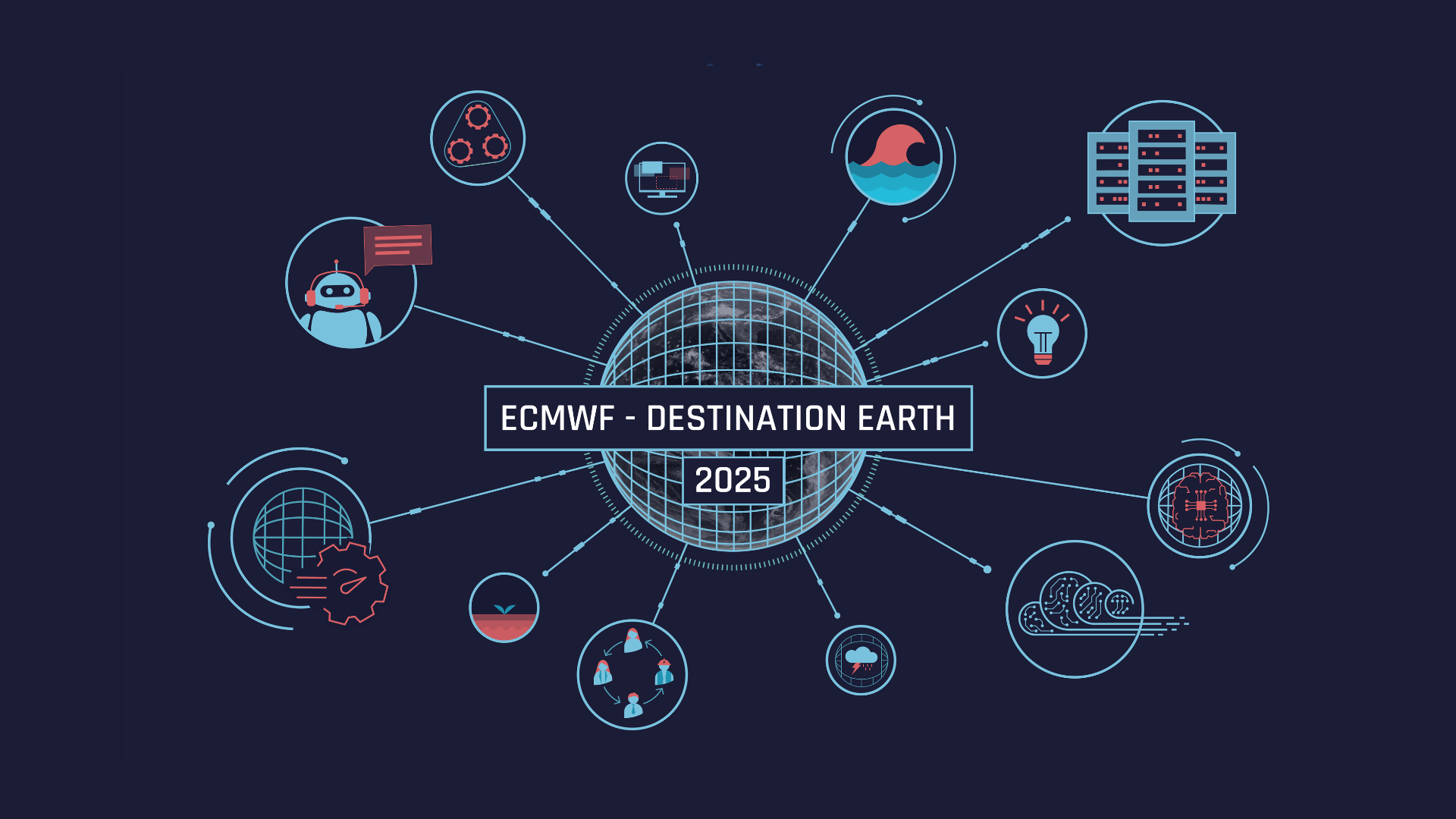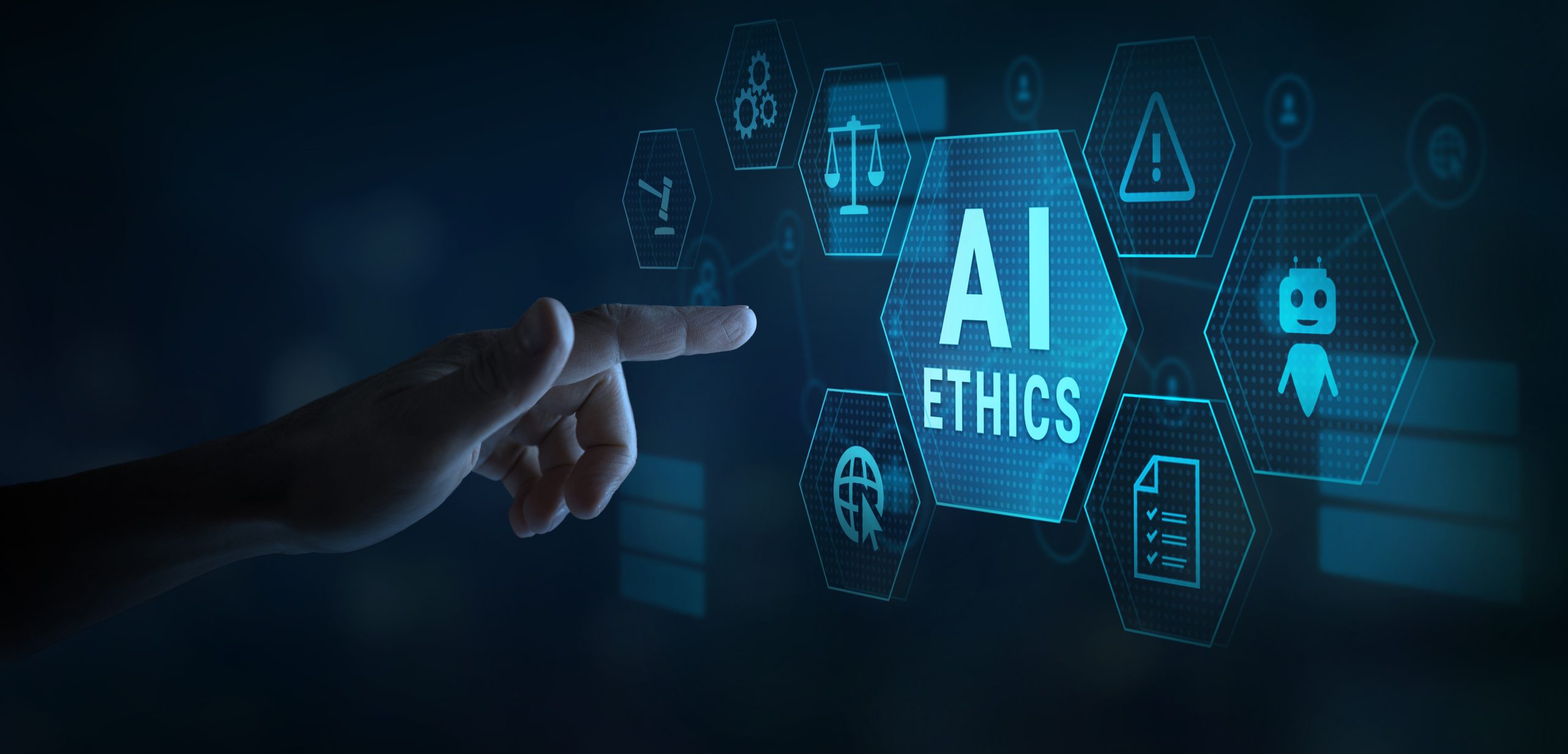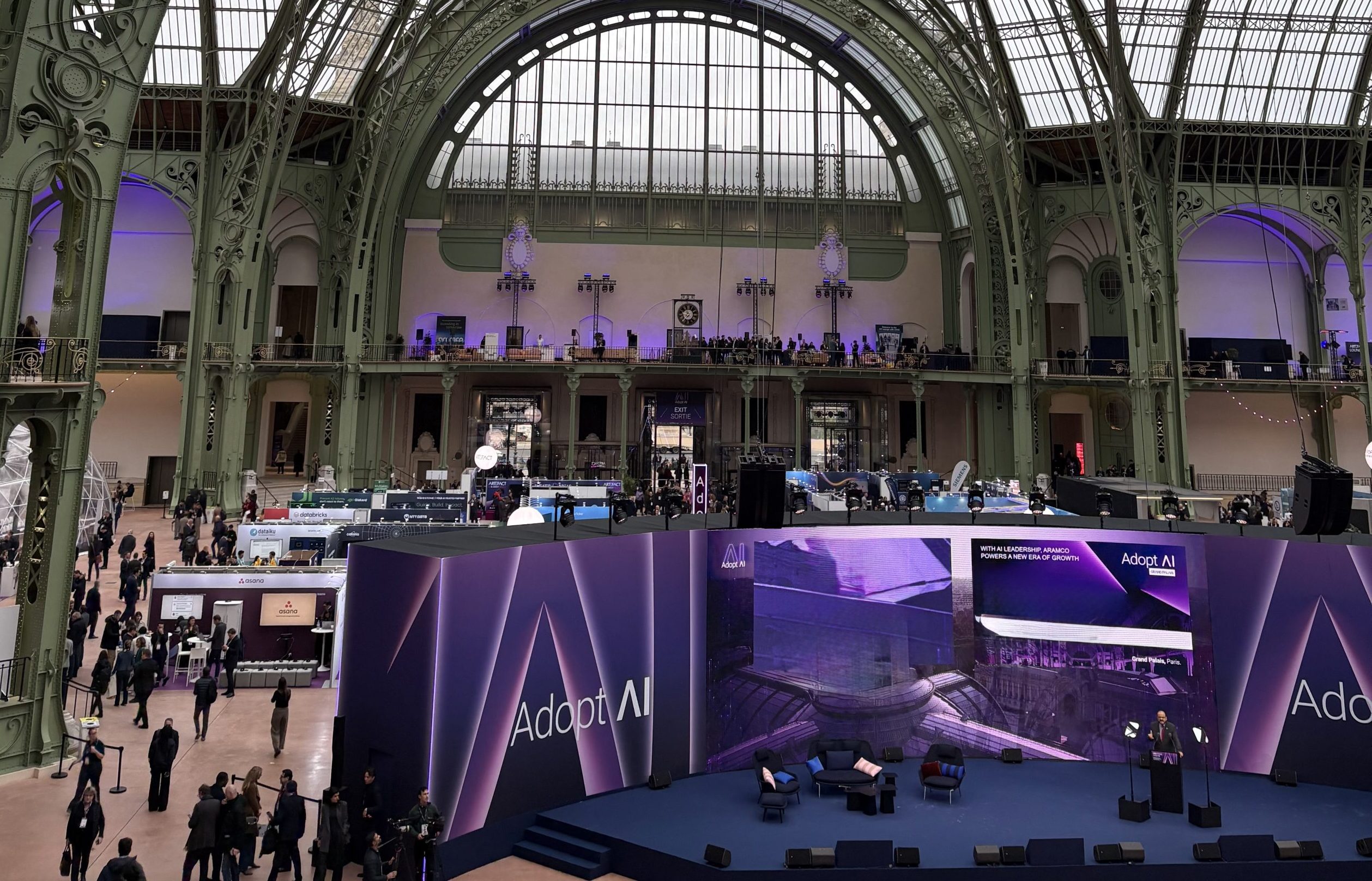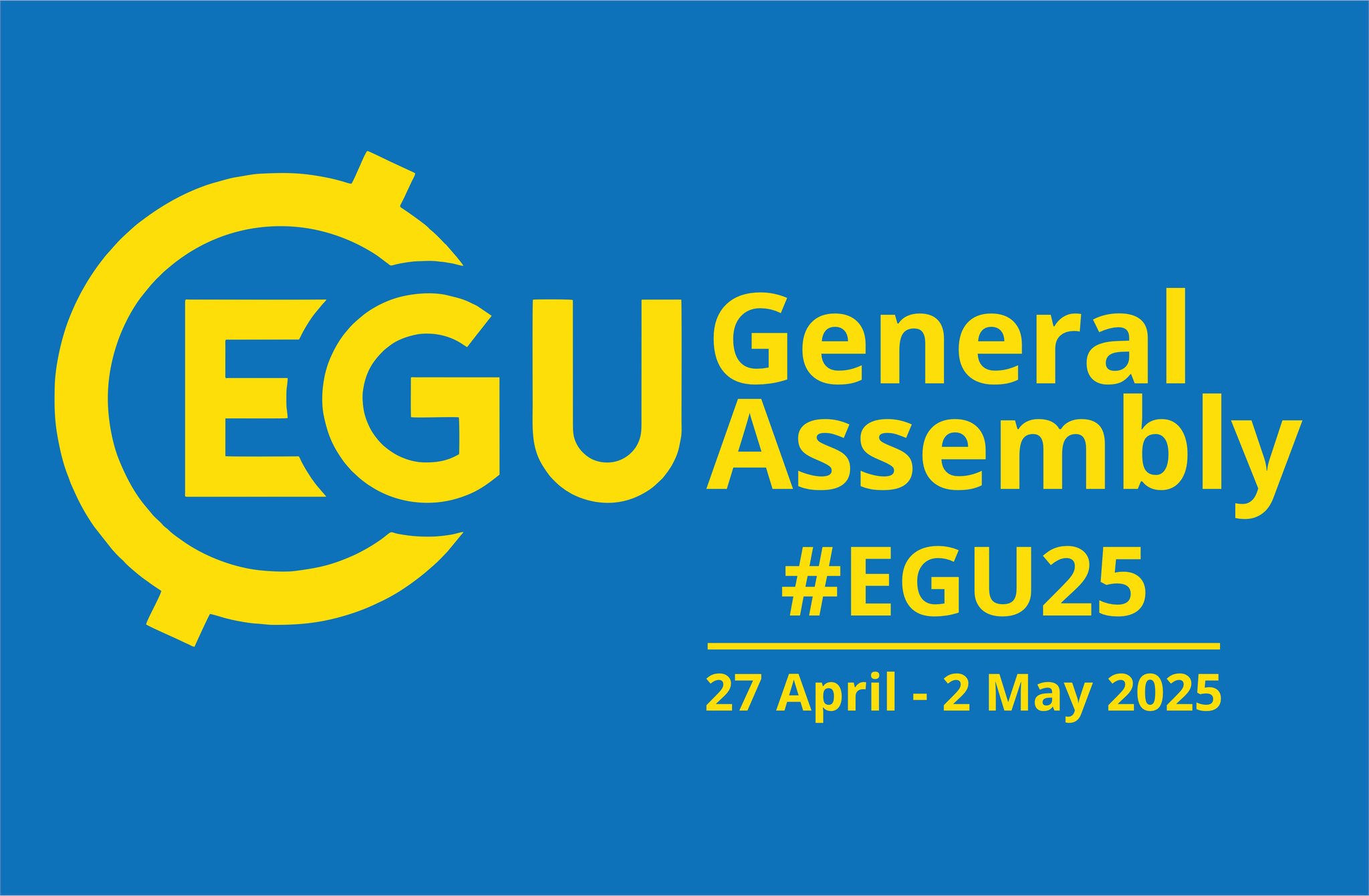
The cutting-edge Artificial Intelligence (AI) activities carried out at ECMWF in close collaboration with its Member States, in the ECMWF Machine Learning (ML) project and in EU’s Destination Earth (DestinE) initiative were strongly represented at the EGU General Assembly 2025.
Multiple presentations showcased how machine learning (ML) is increasingly being applied to Earth system modelling. Contributions led by ECMWF and its partners across Europe highlighted how ML-based models and emulators are moving from conceptual exploration to practical tools that can support climate and weather prediction.
These innovative efforts are not being carried out in isolation— but directly contribute to the broader strategies of ECMWF, the European Meteorological Infrastructure (EMI) and DestinE. ML techniques are augmenting the European weather and climate prediction capabilities, including the digital twins of the Earth system implemented by ECMWF and their partners in DestinE.
The work presented at EGU25 demonstrated the accelerating progress in applying ML methods to simulate and emulate key Earth system components and provide scalable and efficient data-driven modelling tools.

Participants from ECMWF at the 2025 EGU General Assembly.
Data-Driven Ocean Modelling
ECMWF scientist Rachel Furner presented the recent work “Developing a data-driven global ocean model at ECMWF” (EGU25-11883), introducing a machine learning model designed to simulate the 3D evolution of the ocean. This work carried out in the framework of DestinE is exploiting the Anemoi ML framework, developed by ECMWF together with its Member States, to generate an ocean component that can be used within a fully data-driven Earth system model.
Using a graph-based encoder-decoder architecture with a transformer core, the ocean component was trained on the ORAS6 ocean reanalysis dataset with key forecast variables such as temperature, salinity, ocean currents, sea-surface height, and sea ice. The initial results are promising with ongoing investigations into architecture design and training strategies.
Coupling Earth System Components
One of the key challenges in building ML-based prediction systems is integrating multiple components into a coherent modelling framework. This was the focus of the talk “Coupling approaches for data-driven Earth system models” (EGU25-4499), where our colleague Lorenzo Zampieri presented strategies for combining atmosphere, ocean, and land models. Two main coupling paradigms are explored at ECMWF: joint models trained end-to-end using a shared loss function, and modular multi-model systems where individual components exchange information at well-defined interfaces.
At ECMWF, both approaches are being tested building on its Artificial Intelligence Forecasting System (AIFS) and the earth system ML-driven components developed in DestinE. Recent developments focus on coupling surface ocean and sea ice components to the atmosphere. This integration expands the range of forecasted fields, including sea surface temperature, ocean currents, and sea ice coverage, enabling to assess how improved marine boundary conditions influence atmospheric prediction skill.
These findings highlight the flexibility of ML in Earth system integration and the importance of coupling strategy in achieving physically consistent and skilful predictions, laying the groundwork for more comprehensive data-driven models across timescales.
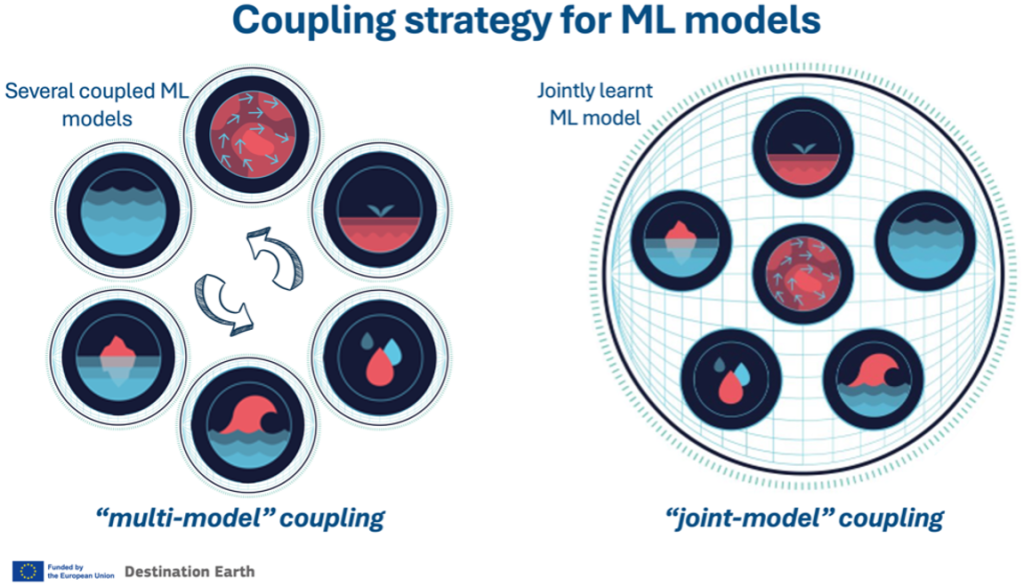
Coupling strategies for ML models under investigation at ECMWF, as presented at EGU25.
Joint Forecasting of Waves and Winds
In a talk on “Representing waves in ECMWF’s data-driven forecasting system AIFS” (EGU25-11946), ECMWF Sara Hahner tackled the challenge of forecasting surface ocean waves—a crucial component of the Earth system for its relevance for shipping and nautical activities. This talk presented progress on a joint atmosphere-wave model trained to simulate both wind and wave fields simultaneously. Using ECMWF’s latest wave model to build the training dataset, this ML approach improves wave forecasts and coherently produces realistic surface wind predictions, particularly in high-wind regimes and sea-ice-influenced regions.
This work illustrates the potential of ML models to capture tightly coupled processes, reinforcing their value in complex Earth system applications.
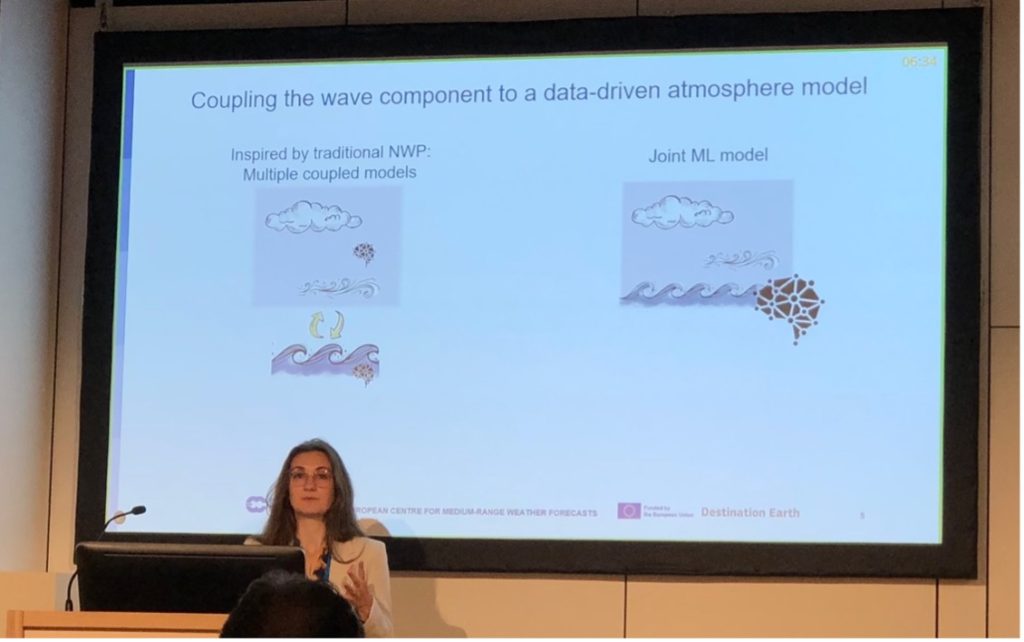
Sara Hahner presenting developments in wave forecasting.
Towards Operational Readiness and Scalable Infrastructure
The sessions at EGU25 also demonstrated how ML tools are transitioning from research to real-world use. In the solicited talk “The AIFS: ECMWF’s data-driven weather forecasting system” (EGU25-12077), ECMWF scientists highlighted the operationalisation of machine learning at ECMWF, showcasing the implementation of AIFS Single 1.0 (the first operational version of the AIFS model) earlier this year. They also presented ongoing work on the probabilistic version of AIFS, AIFS-CRPS, which outperforms the physics-based Integrated Forecasting System ensemble for most variables at medium-range and was implemented on 1st of July.
Anemoi (EGU25-19431), a modular open-source framework co-developed by ECMWF and national meteorological services in its Member and cooperating states is supporting this fast evolution. Anemoi facilitates the training, testing, and deployment of ML models like AIFS, with built-in support for reproducibility and integration.
Scientific Leadership in Key Sessions
In addition to presenting the cutting-edge developments above, ECMWF scientists played a central role in shaping the scientific dialogue around ML at EGU25. Lorenzo Zampieri served as lead convener of the session “Advances in sea-ice modelling: developments and new techniques”, which brought together experts working on novel approaches to simulate the rapidly evolving sea-ice system, including ML-enhanced methods. Rachel Furner led the session “Machine Learning for Ocean Science”. This session focused on a plethora of machine learning approaches used within oceanography, looking at both the physical ocean and ocean biogeochemistry, across various timescales, all the way to climate scales. Talks covered applications of ML to both ocean modelling and ocean observing systems, including emulating ocean models and filling observational gaps. These sessions underscored ECMWF’s work in fostering collaboration and innovation within the weather and climate modelling community.
Enabling the Digital Twins of the Future
The work presented at EGU25 confirms that machine learning is no longer a peripheral topic in Earth system science. ML-based model components are being developed at ECMWF and its Member and cooperating states in DestinE to simulate key components of the Earth system with increasing skill and rapid progress towards operational readiness.
These efforts, supported by scalable tools like Anemoi, are set to play a vital role in the augmenting the capabilities of DestinE’s Climate and Extremes Digital Twins—empowering faster and more flexible data-driven approaches to understand and respond to environmental challenges in a rapidly changing world.
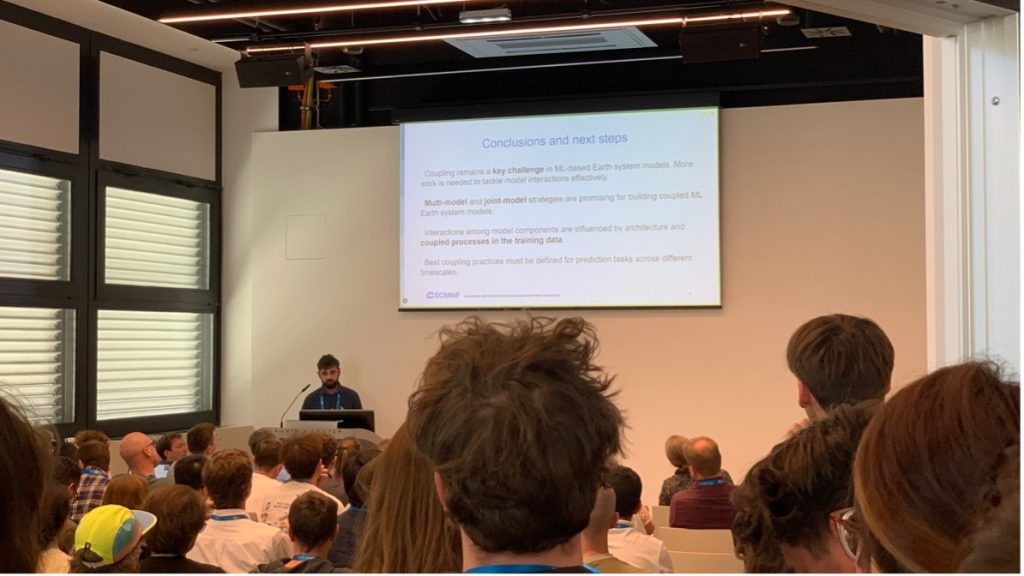
Lorenzo Zampieri discusses ML coupling approaches under consideration in DestinE
Destination Earth is a European Union funded initiative launched in 2022, with the aim to build a digital replica of the Earth system by 2030. The initiative is being jointly implemented by three entrusted entities: the European Centre for Medium-Range Weather Forecasts (ECMWF) responsible for the creation of the first two ‘digital twins’ and the ‘Digital Twin Engine’, the European Space Agency (ESA) responsible for building the ‘Core Service Platform’, and the European Organisation for the Exploitation of Meteorological Satellites (EUMETSAT), responsible for the creation of the ‘Data Lake’.
We acknowledge the EuroHPC Joint Undertaking for awarding this project strategic access to the EuroHPC supercomputers LUMI, hosted by CSC (Finland) and the LUMI consortium, Marenostrum5, hosted by BSC (Spain) Leonardo, hosted by Cineca (Italy) and MeluXina, hosted by LuxProvide (Luxembourg) through a EuroHPC Special Access call.
More information about Destination Earth is on the Destination Earth website and the EU Commission website.
For more information about ECMWF’s role visit ecmwf.int/DestinE
For any questions related to the role of ECMWF in Destination Earth, please use the following email links:
